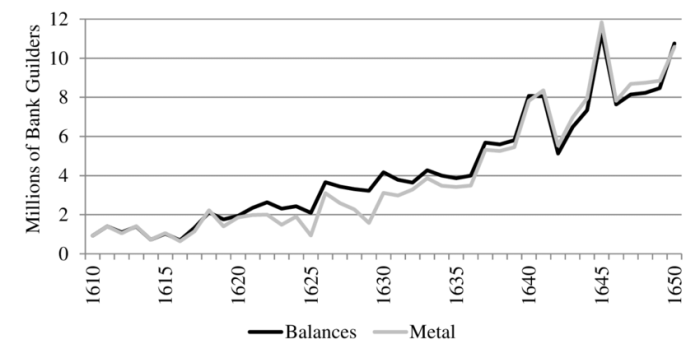Step into the gilded halls of the Bank of Amsterdam AP Euro, where the seeds of modern banking were sown. This financial behemoth, established in the 17th century, revolutionized trade, commerce, and the very fabric of finance, leaving an indelible mark on the world economy.
Delve into the intricate workings of this banking pioneer, exploring its organizational structure, innovative practices, and the profound impact it had on the Dutch Golden Age and beyond.
Historical Significance of the Bank of Amsterdam: Bank Of Amsterdam Ap Euro

Established in 1609, the Bank of Amsterdam marked a pivotal moment in the evolution of banking and finance. It was the first true central bank, providing a secure and standardized monetary system for the Dutch Republic, which was then a major economic and maritime power.
The bank’s primary purpose was to facilitate trade and commerce by providing a reliable means of exchange and credit. It issued standardized coins and banknotes, reducing the risk of counterfeiting and stabilizing the value of currency. Additionally, the bank offered loans and credit to merchants and businesses, fostering economic growth and expansion.
Role in Modern Banking and Finance
The Bank of Amsterdam laid the foundation for modern banking practices and institutions. Its innovative use of banknotes, standardized currency, and centralized credit management became the model for central banks worldwide. It also played a crucial role in the development of the stock market and the concept of fractional reserve banking, which allowed banks to lend out a portion of their deposits, further expanding the money supply and stimulating economic activity.
Economic Impact of the Bank of Amsterdam

The Bank of Amsterdam played a pivotal role in shaping the economic landscape of the Dutch Golden Age. It transformed Amsterdam into a financial hub, facilitating trade and commerce on an unprecedented scale.
Impact on Trade and Commerce
The bank’s establishment introduced standardized exchange rates, making it easier for merchants to conduct international transactions. This led to a surge in trade volume, with Amsterdam becoming a central hub for goods from all over the world. The bank also provided loans to merchants, enabling them to expand their businesses and take on larger ventures.
Financial Transactions and Economic Growth
The bank’s system of credit and deposit accounts streamlined financial transactions. Merchants could deposit their funds securely, ensuring their safety and accessibility. This fostered trust and confidence in the financial system, leading to increased investment and economic growth.
The Bank of Amsterdam, established in 1609, played a pivotal role in the development of modern banking. Interestingly, the Hawaiian phrase “kulia i ka nu’u” ( kulia i ka nu’u meaning ) translates to “strive for the summit.” This concept of perseverance and ambition resonates with the Bank of Amsterdam’s legacy of innovation and financial leadership.
Role in the Dutch Golden Age
The economic prosperity facilitated by the Bank of Amsterdam fueled the Dutch Golden Age. The bank’s financial stability and efficient trade system allowed the Netherlands to become a global economic powerhouse. It attracted skilled workers, artists, and scholars, contributing to the country’s cultural and scientific advancements.
Organizational Structure and Practices of the Bank of Amsterdam

The Bank of Amsterdam was established in 1609 as a private institution to regulate the city’s financial system. Its unique organizational structure and innovative practices played a significant role in its success and influence.
The bank was managed by a board of directors elected by the city’s governing body. The board oversaw the bank’s operations, including setting interest rates, issuing loans, and managing its reserves. The bank’s unique feature was its use of paper money, known as “bank money,” which was backed by the bank’s assets and served as a stable and reliable form of currency.
Regulations and Accounting Practices
The Bank of Amsterdam implemented strict regulations to ensure its financial stability. It required regular audits, maintained detailed accounting records, and imposed limits on lending. These practices ensured the bank’s credibility and trustworthiness, attracting deposits from merchants and investors.
Legacy and Influence of the Bank of Amsterdam

The Bank of Amsterdam left an enduring legacy on global banking practices, shaping the development of central banking and financial institutions. Its innovative principles and practices continue to influence modern banking systems.
Influence on Central Banking
The Bank of Amsterdam pioneered the concept of a central bank, responsible for managing the monetary system and providing financial stability. Its model of issuing banknotes backed by specie reserves became the foundation for central banking worldwide.
- Established the principle of fractional reserve banking, allowing banks to issue banknotes in excess of their specie holdings, increasing liquidity and credit availability.
- Provided a stable currency, facilitating trade and commerce by reducing currency fluctuations and the risk of counterfeiting.
Influence on Financial Institutions
The Bank of Amsterdam’s organizational structure and practices influenced the development of financial institutions. Its use of double-entry bookkeeping and standardized accounting methods set a precedent for modern accounting practices.
- Established a model for joint-stock companies, where investors shared ownership and profits, providing a framework for business organization and investment.
- Developed the concept of credit rating, assessing the financial health of borrowers and influencing lending practices.
Modern Banking Practices, Bank of amsterdam ap euro
Principles and practices from the Bank of Amsterdam continue to shape modern banking:
- The use of banknotes and digital currencies, backed by central bank reserves, provides a stable and secure medium of exchange.
- Central banks around the world regulate and supervise financial institutions, ensuring the stability and integrity of the financial system.
- Double-entry bookkeeping and standardized accounting practices remain essential for transparency and accountability in financial transactions.
Clarifying Questions
What was the primary purpose of the Bank of Amsterdam AP Euro?
To facilitate financial transactions, promote economic growth, and provide a stable monetary system.
How did the Bank of Amsterdam AP Euro contribute to the Dutch Golden Age?
By providing a secure and efficient financial infrastructure that supported trade, investment, and economic expansion.
What unique features distinguished the Bank of Amsterdam AP Euro from other banks of its time?
The use of paper money, a sophisticated accounting system, and a decentralized management structure.
